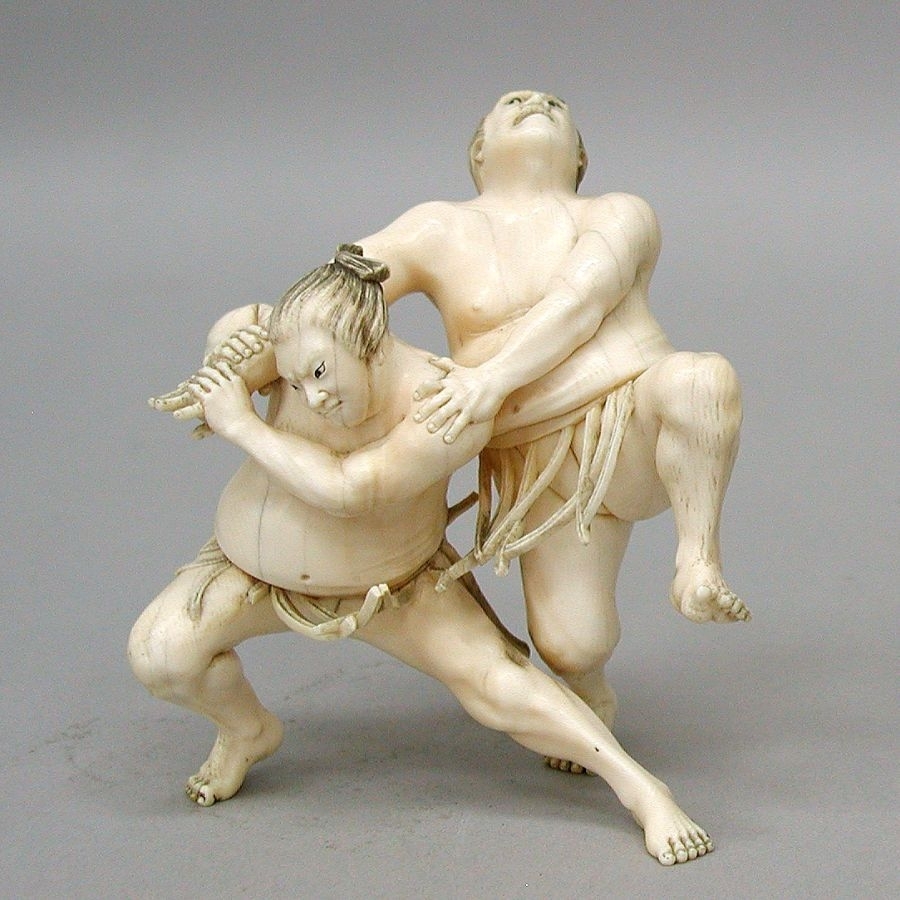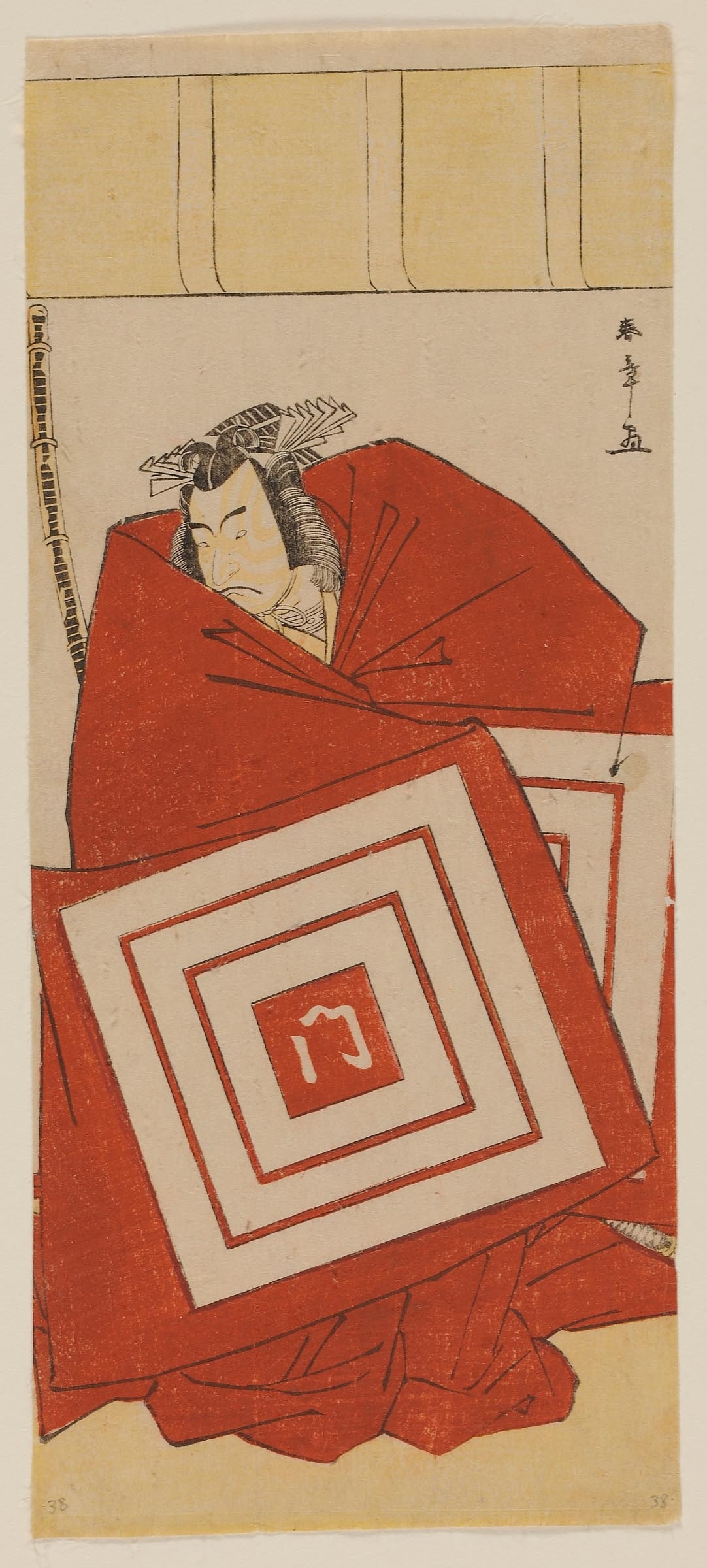Exhibition Description
Introduction
This exhibition is rooted in the historical, visual, and cultural connections between Carnegie Museum of Art’s collection of traditional Japanese prints (ukiyo-e) and Carnegie Museum of Natural History’s collection of Japanese ivories (okimono). Both Pittsburgh collections originated in the early years of the 20th century, motivated by the West’s acceptance of Japan as an emerging modern power, and the aesthetic appeal of Japanese art to Western artists and collectors. In 1905 Carnegie Institute’s department of fine arts (predecessor of Carnegie Museum of Art) mounted its first exhibition of Japanese printsundefined95 examples from the collection of poet and critic Sadakichi Hartmannundefinedand in 1910 it displayed in the Museum a selection of H. J. Heinz’s rapidly growing collection of ivories. This exhibition will fulfill Carnegie Institute’s original vision for Japanese art: a gallery of the combined collections exemplifying aspects of Japanese culture most relevant to the modern West.
connections between Carnegie Museum of Art’s collection of traditional Japanese prints (ukiyo-e) and Carnegie Museum of Natural History’s collection of Japanese ivories (okimono). Both Pittsburgh collections originated in the early years of the 20th century, motivated by the West’s acceptance of Japan as an emerging modern power, and the aesthetic appeal of Japanese art to Western artists and collectors. In 1905 Carnegie Institute’s department of fine arts (predecessor of Carnegie Museum of Art) mounted its first exhibition of Japanese printsundefined95 examples from the collection of poet and critic Sadakichi Hartmannundefinedand in 1910 it displayed in the Museum a selection of H. J. Heinz’s rapidly growing collection of ivories. This exhibition will fulfill Carnegie Institute’s original vision for Japanese art: a gallery of the combined collections exemplifying aspects of Japanese culture most relevant to the modern West.
Historical Background
Two men promoted Carnegie Institute’s interest in Japanese art before WWI: the poet and critic Sadakichi Hartmann and the ketchup magnate and bibelot collector H. J. Heinz. Hartmann, of Japanese-German parentage, was a flamboyant, waspishly brilliant exponent of modernism, japonisme, and avant-garde photography as well as a talented poet. An associate of John Beatty, first director of Carnegie Institute’s department of fine arts, Hartmann seems to have masterminded the department’s prescient exhibitions of modern photography and Japanese prints in the first decade of the 20th century. H. J. Heinz was a
before WWI: the poet and critic Sadakichi Hartmann and the ketchup magnate and bibelot collector H. J. Heinz. Hartmann, of Japanese-German parentage, was a flamboyant, waspishly brilliant exponent of modernism, japonisme, and avant-garde photography as well as a talented poet. An associate of John Beatty, first director of Carnegie Institute’s department of fine arts, Hartmann seems to have masterminded the department’s prescient exhibitions of modern photography and Japanese prints in the first decade of the 20th century. H. J. Heinz was a
Pittsburghbusinessman and devout evangelical Christian; his personal collection of intricate
objets d’art is closely connected to his world-wide travels on behalf of regional industry and the international Sunday School Movement. He collaborated with the department of wood and ivory carvings and the department of textiles in what is now Carnegie Museum of Natural History, rising to status of Honorary Curator of both departments shortly before his death in 1919.
These very different men shared a vision of
Japanas an important new force in the world of the 20
th century. H. J. Heinz observed succinctly in c. 1905, “
Japanis the key to the Orient.” Hartmann elaborated, c. 1904, “Through her [Japan’s] temperament, her individuality, her deeper insight into the secrets of the East, her ready designing of the powers of the West, and more than all through the fact that she enjoys the privilege of being a pioneer, it may have been decreed in the secret council chambers of destiny that on her shores shall be first created the new art which shall prevail throughout the world for the next thousand years.” Both understood that 19
th- and early 20
th-century Japanese arts combined historic Asian traditions and avant-garde Western ideas in ways that could predict or shape the 20
th century.
Exhibition Description.
Part 1: Lessons for the West. The first section will combine ukiyo-e prints acquired before 1920 with a selection of ivories from the Heinz collection. The critical writings of Sadakichi Hartmann will inform the interpretation; they identify and stress those aspects of Japanese art, life, and culture that contrast with, compliment, or depart from Western practices and values. He uses classic Japanese art, including woodblock prints, to contrast the beauty, simplicity, elegance, and originality of traditional Japanese art to the ugliness, shoddiness, superficiality, and rigidity of Western industrial production. He was, at the same time, sensitive to the disruptive effects of Western commercial practices on Japanese art, and he observed the radical impact of Japanese art on “decadent” Western taste. The early Carnegie collections of woodblock prints and ivories exemplify turn of the century ideas about cultural interchange, corruption, and reform as exemplified by Japanese arts made before and after exposure to Western ideas.
Part 2: Artists and poets. An advocate of cultural immersion rather than superficial imitation or appropriation, Hartmann practiced what he preached by studying Japanese poetry as well as visual art, and he wrote poetry in the Japanese style. This section of the exhibition emulates his example by featuring prints whose meaning is enriched or explained by the poems inscribed on them. The interplay of image and text (given in translation) provides visitors with a sense of the Japanese aesthetic and meaning inherent in each, consistent with the early collection’s purpose: to promote understanding through the study of alien arts and cultures.